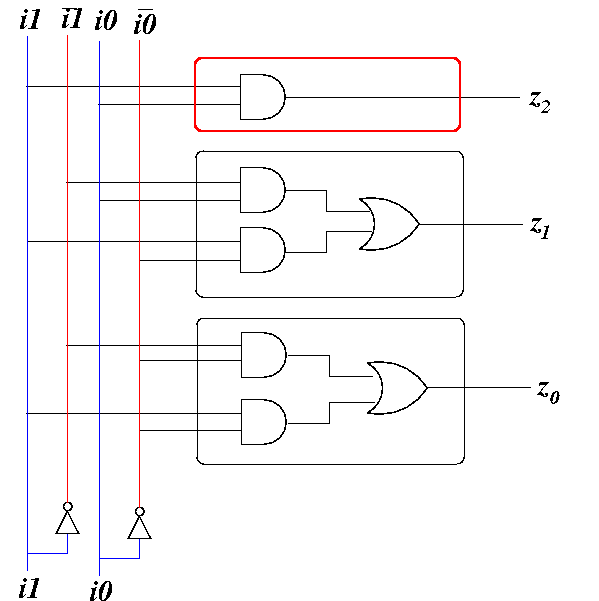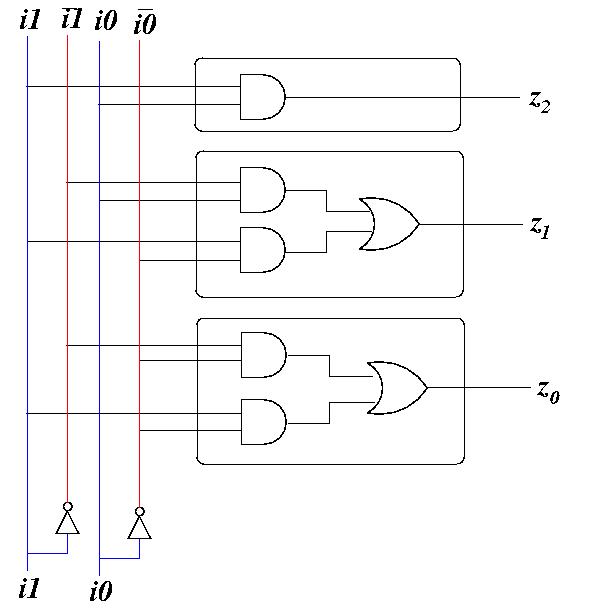Problem description:

|
(Show the behavior using: /home/cs355001/demo/circuits/add1)
Step 1: list out every combination of the input values
i1 i0 | z2 z1 z0
----+----+----+----+----
0 0 |
0 1 |
1 0 |
1 1 |
|
Step 2: determine the output for each combination of input values
i1 i0 | z2 z1 z0
----+----+----+----+----
0 0 | 0 0 1 (00 + 1 = 001)
0 1 |
1 0 |
1 1 |
|
Step 2: determine the output for each combination of input values
i1 i0 | z2 z1 z0
----+----+----+----+----
0 0 | 0 0 1
0 1 | 0 1 0 (01 + 1 = 010)
1 0 |
1 1 |
|
Step 2: determine the output for each combination of input values
i1 i0 | z2 z1 z0
----+----+----+----+----
0 0 | 0 0 1
0 1 | 0 1 0
1 0 | 0 1 1 (10 + 1 = 011)
1 1 |
|
Step 2: determine the output for each combination of input values
i1 i0 | z2 z1 z0
----+----+----+----+----
0 0 | 0 0 1
0 1 | 0 1 0
1 0 | 0 1 1
1 1 | 1 0 0 (11 + 1 = 100)
|
Step 2: determine the output for each combination of input values

|
This is the logic table of the "add 1" function
Note: the logic table actually contains 3 simpler functions (one function for z2, one for z1 and another for z0)
Click on table to pull out
Step 1: draw the input signals and the output signal(s)

Step 2: add the NOT-gates to obtain all possible input combinations:

Apply the circuit design technique on output signal z0:

You only use column z0 in the logic table to design this digital circuit!
Apply the circuit design technique on output signal z1:

You only use column z1 in the logic table to design this digital circuit!
Apply the circuit design technique on output signal z2:

You only use column z2 in the logic table to design this digital circuit!
Switch aa i1 '1' ZERO; Not aa i1 n_i1; Switch ba i0 '0' ZERO; Not ba i0 n_i0; /* ----- z2 ---- */ And ab i1 i0 z2a; Or ac z2a z2; /* ----- z1 ---- */ And bb n_i1 i0 z1a; And bb i1 n_i0 z1b; Or bc z1a z1b z1; /* ----- z0 ---- */ And cb n_i1 n_i0 z0a; And cb i1 n_i0 z0b; Or cc z0a z0b z0; Probe ad z2; Probe bd z1; Probe cd z0; |
(I will write this code interactively in class)
I will demo this circuit in class:

Circuit file: /home/cs355001/demo/circuits/add1